CHEESE WEDGE
THE ENTIRE TIME
I WATCHED GRAVITY FALLS
MY FATHER
THOUGHT BILL CIPHER
WAS A FUCKING
CHEESE WEDGE
UNIRONICALLY
HE THOUGHT BILL CIPHER WAS A
WEDGE OF CHEESE
More Posts from Quiina and Others
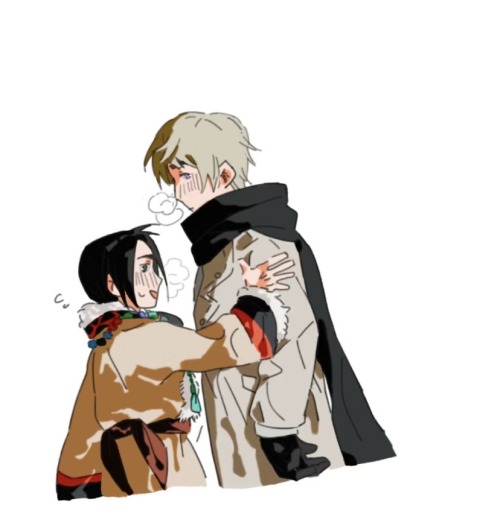


Performative Tibetan costumes (only in photostudio )


They are old bitter exes, OF COURSE I'D SHIP BILLFORD

I’m actually so sick reading up about the news that just broke. The US and UK are actively bombing Yemen in a bid to distract the world from Israel’s ongoing genocide in Palestine. Over and over it’s proven that Arabs are not perceived as humans by the west. This is insane. It keeps getting worse day by day. Ceasefire now.


DO YOU KNOW WHAT SPAWNED YOUR EXISTENCE?
[ID: Two lineless, digital paintings, both with warm, dark gray backgrounds. Both canvases are shaped like exact squares.
Painting one shows an adult Bill Cipher, a bright yellow triangle with a top hat, bow tie, cane, singular eye, and long lashes, reaching out to shake hands with the Axolotl, a pink axolotl with an electric blue tail. Bill is looking at the Axolotl casually, and his outstretched hand is engulfed in blue flames, while the Axolotl is smiling at Bill gently, reaching out to take his hand. There are stylized stars, similar to sparkles, in the top right and bottom lefthand corners of the painting. The painting is textured so that you can see the gray of the canvas very faintly through the brush strokes.
Painting two consists mostly of a short passage from Edwin Abbott Abbot's Flatland, written in light gray over the dark background. The passage is the beginning of chapter 7, and reads as follows:
"7. Concerning Irregular Figures
I for my part have never known and Irregular who was not also what Nature evidently intended him to be-- a hypocrite, a misanthropist, and, up to the limits of his power, a perpetrator of all manner of mischief..."
Below the quote, near the very bottom of the page, is a tiny illustration of a very young Bill Cipher. He is drawn completely in grayscale, and is looking down at the ground angrily, fists clenched. He is wearing a pauper's cap and has bandages wrapped around his rightmost angle, which is noticeably longer and more acute than his other angles.
End ID]
In some of the neutral endings, Sans has been shown to have told Papyrus that his friends simply "went on a vacation" when they've been killed by you/frisk because he doesn't have the heart to tell him what really happened, like how he omits the truth of what happened to papyrus to Toriel in order to preserve the "perfect little angel" image she has of Frisk
Papyrus "accepts" that in his presence but the second he's not in the room, he drops his cheery and naive facade to tell you how he really feels
So if anything, they're both protecting eachother from less than savory truths, but yeah, he has some streaks of lying
you're RIGHT thank you anon. i forgot about those endings entirely. those are a good bit of characterization to keep in mind in any conversation about sans and lying. thank you! let's think about this...
personally, in my characterizations of sans, i've always interpreted sans's "vacation" excuse as part of his nihilism--if you know you're stuck in a time loop, and you know you've reached the "end" of the time loop, then everyone who died is actually about to come back. Combined with some pretty heavy depression, you might think of everyone who died as just getting to skip out on the sad epilogue. especially since sans doesn't die in literally any epilogue*, I've always thought of that as less protective and more...conflict avoidant? cracks in the facade?
like, at the end of the loop, his actions no longer matter. the human is not in the underground, and they're the one with all the power. outside of that phone call, he has no further effect on them and therefore the world in general, outside of his relatively small circle. so i think the things said about sans in those phone calls reveal a different side of him. after all, no one will remember this soon, so he doesn't have to keep up the "i'm a normal guy who only knows about regular linear time and therefore believes in a future" thing. so...yeah. permanence isn't permanent. everyone is on vacation. they all get to take a little dirt nap and he's just waiting for them to come back. why break toriel's heart when this is all going to end halfway through that conversation? I think it's less about lying to deceive (after all, Toriel and Papyrus are both perfectly capable of finding the truth), and more about the interesting shapes sans twists his understanding of reality into in order to understand that people are dead without taking the time to process that grief. He's mostly telling himself that people are on vacation. They're fine, maybe even lucky, and they'll come back soon so he doesn't have to worry about it. that's what allows him to function and even help rule** in bad endings, and how he's able to avoid totally breaking down after papyrus's death in those runs. no one is dead. they're just resting.
That said, he does say that to Papyrus knowing that it's literally, factually not true. He super does lie either to impart his horrible coping skills or to avoid having a conversation he doesn't like. It's also a really bad sign for his relationship with reality that he's just saying this with no regard for how insane he sounds. And, given how he does step up to rule in the King Papyrus ending...maybe he doesn't assume a reset is coming and I'm wrong about all of that. But my interpretation is that "everyone is on vacation actually" and "haha nah my brother is fine he's just...not around...ever..." are both so transparent that they can't be genuine attempts to deceive. Frankly, Sans is just a better liar than that.
So...tl;dr: Sans does lie! I was wrong about that. but I think he lies to protect himself more than anyone else. I don't really see it as something so...altruistic? controlling? condescending?? as lying for Papyrus and Toriel's sake. he just can't handle confronting reality, and god forbid he have a conversation about it.
*Sans may or may not die in the no mercy but in any case the world ends like 3 minutes after that so...not much of an "epilogue" to live in. he survives basically as long as the timeline does.
**In the King Papyrus ending, Sans does "paperwork" and dictates policy decisions such as how humans will be judged (which, his policy there is interesting in and of itself). Papyrus says Sans is "working hard." My takeaway from this is that Sans is doing most of the logistical ruling, while Papyrus works on the absolute disaster of morale. Unclear whether Sans has a role in Alphys's ending. He seems to drift towards whoever is closest to him of the survivors, and help them with whatever they need.
God I love the 'Blames the arson for the fire' line. I don't know if this is the right interpretation or what, but to me, it reads like Bill blames to destruction of his home dimension on everything that lead him to destroy it. The constricting rules and regulations, the fact that he felt so trapped as a result...
Blame everything but his own actions. And to shift that blame, he has to...well, we know.
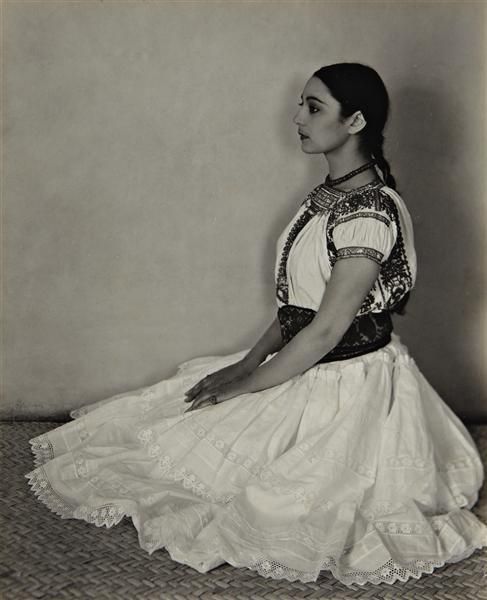
Edward Weston | Cholula Costume, circa 1926
Catalogue Essay:
In 1923 at the urging of his friend Roubaix de l’Abrie Richey and their shared lover Tina Modotti, Edward Weston left his family and moved to Mexico where he embarked on a new chapter in his career that would prove influential in directing the course of his photography. Whereas his earlier portraits adhere to many of the classic characteristics of 19th century portraiture- stoic poses, elaborate costumes, accessories reflective of the sitter- his Mexican period, as seen in lots 254, 255 and 257, illustrates his interest in incorporating elements of Modernism and experimenting with alternate methods and approaches to portraiture. In his first portraits in Mexico, Weston abandoned the studio setting and photographed his sitters against the backdrop of an overcast sky. Tightly cropping the images so that their faces dominated the full frame and shooting from a lower vantage point, gave the sitters a weight and monumentality atypical of the classic portrait. Collectively, Weston had come to refer to that body of work as “heads.” The Mexican writer Francisco Monterde Garcia Icazbalceta perceptively described them as “guillotine heads in the noon sun: unreal necks and martyred eyes in harsh, insolent light.” (Conger, n.p. fig 110/1923) By isolating the head from all context, Weston was able to capture uniquely intimate moments, ones that speak to, not only the disposition of the sitters, but even more to Weston’s personal relationships with them. When Weston met Diego Rivera at his first exhibition in Mexico in the fall of 1923, Rivera quickly became a champion of his work, drawn to the Modernist elements echoed in his own works.The two became close friends and Weston would go on to photograph both Rivera and his wife Guadalupe Marin de Rivera during his two years in Mexico. In Diego Rivera, Mexico, 1924 (Lot 255) one can see the admiration and respect that Weston had for his new friend; that Rivera looks down upon Weston with a jovial expression and Weston, in turn, literally looks up to Rivera, suggests a rapport reminiscent of a mentor with his mentee. Similarly, in Guadalupe Marin de Rivera, 1923 (Lot 257) Weston captures her mid-speech with her mouth agape. From Weston’s own writings of Guadalupe, this is perhaps the most appropriate manner for him to depict her as he wrote of his affection for her “strong voice, almost course, dominating.” But neither of these “heads” are quite as revealing as Tina with Tear, 1923 (Lot 254), which shows Modotti with a tear rolling down her cheek. The act of photographing someone, by its very nature, is an intimate act, but to do as that someone expresses vulnerability supposes an undeniable trust between the photographer and sitter. While Weston’s nudes of Modotti are far more intimate in a literal way, their chief concern lies within the formal qualities of her body. Here, by contrast, the camera nearly becomes transparent as we see Modotti not through a lens but through the adoring eye of her lover. In as much as Weston’s “heads” demonstrate his fascination with contemporary icons of Mexican art, such as Rivera and his wife, he was equally interested in the greater history of Mexican culture. In Cholula Costume (lot 256), Weston portrays the dancer and choreographer Rosa Covarrubias in native Mexican attire. In 1930 Rosa married Miguel Covarrubias, the renowned Mexican ethnologist, art historian, painter, caricaturist, and set and costume designer. Rosa and Miguel were close friends of Weston and Modotti, who taught Rosa photography. What Weston captured in his lens is not merely the “woman of great beauty and charm” as described by José Limón in his biography, but also a model of traditional Mexican culture, one that was researched and consequently introduced by Rosa and her husband to create a new era in contemporary Mexican dance.
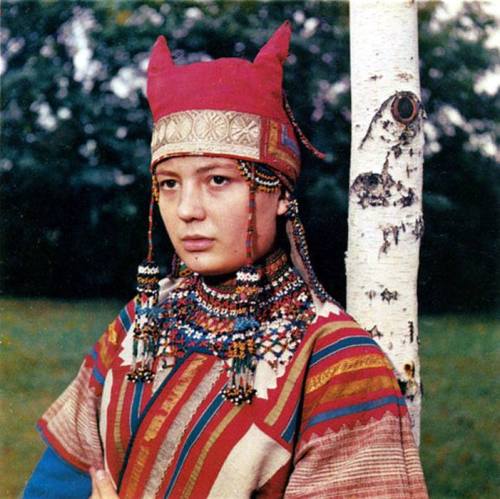
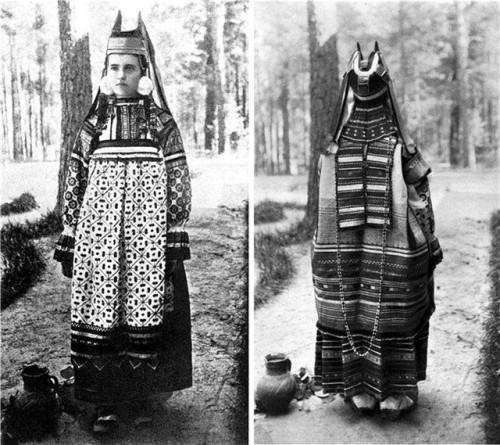
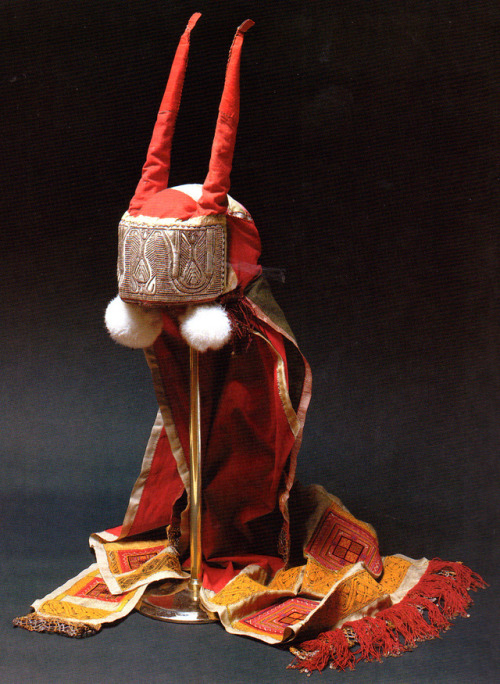
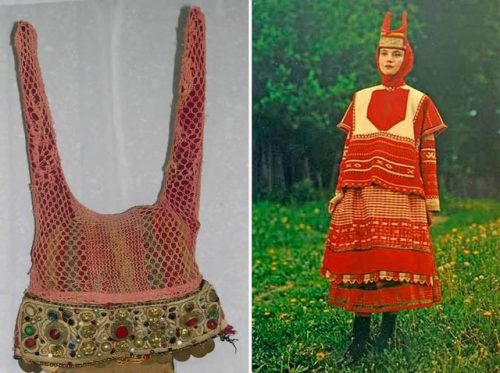
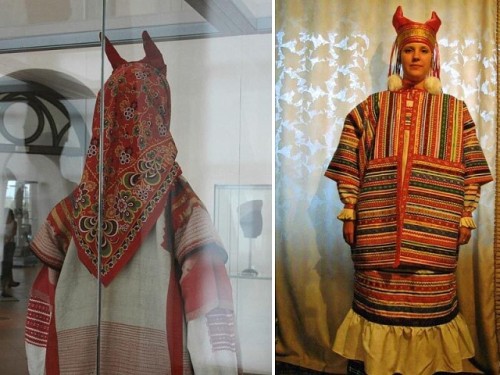
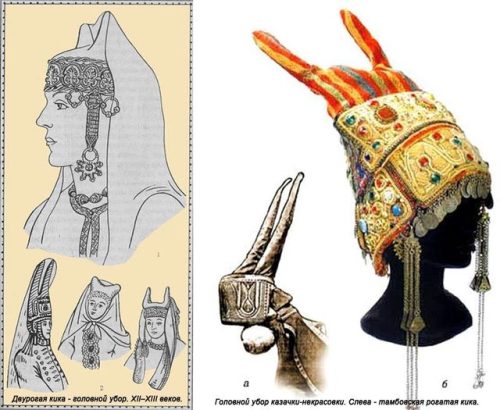
Horned kichka (Russian: рогатая кичка) is a type of ancient russian headdress for a married woman.
The horned kichka was a fertility symbol, and it served as a protection against evil spirits.

Just got diagnosed with this
-
 i-have-become-mistakalien liked this · 9 months ago
i-have-become-mistakalien liked this · 9 months ago -
 pinetreesdoodles liked this · 9 months ago
pinetreesdoodles liked this · 9 months ago -
 mareneeps liked this · 9 months ago
mareneeps liked this · 9 months ago -
 tidepod-consumer liked this · 9 months ago
tidepod-consumer liked this · 9 months ago -
 anndra-k liked this · 10 months ago
anndra-k liked this · 10 months ago -
 lluvioscatniptea reblogged this · 10 months ago
lluvioscatniptea reblogged this · 10 months ago -
 lluvioscatniptea liked this · 10 months ago
lluvioscatniptea liked this · 10 months ago -
 anonymoustriangle174 reblogged this · 10 months ago
anonymoustriangle174 reblogged this · 10 months ago -
 amberleaff liked this · 11 months ago
amberleaff liked this · 11 months ago -
 inthecornerofyourbedroom liked this · 1 year ago
inthecornerofyourbedroom liked this · 1 year ago -
 star-png liked this · 1 year ago
star-png liked this · 1 year ago -
 ceruleancat-10756 liked this · 1 year ago
ceruleancat-10756 liked this · 1 year ago -
 feral-yhs-fan liked this · 1 year ago
feral-yhs-fan liked this · 1 year ago -
 sweeralva liked this · 1 year ago
sweeralva liked this · 1 year ago -
 chaoticclownage liked this · 1 year ago
chaoticclownage liked this · 1 year ago -
 unsightlymuse liked this · 1 year ago
unsightlymuse liked this · 1 year ago -
 stupidgayfish liked this · 1 year ago
stupidgayfish liked this · 1 year ago -
 shadow-king-club liked this · 1 year ago
shadow-king-club liked this · 1 year ago -
 the-secretive-plotter liked this · 1 year ago
the-secretive-plotter liked this · 1 year ago -
 trixiblaze liked this · 1 year ago
trixiblaze liked this · 1 year ago -
 aroacekitty reblogged this · 1 year ago
aroacekitty reblogged this · 1 year ago -
 aroacekitty liked this · 1 year ago
aroacekitty liked this · 1 year ago -
 azuretheshitposter reblogged this · 1 year ago
azuretheshitposter reblogged this · 1 year ago -
 azuretheshitposter liked this · 1 year ago
azuretheshitposter liked this · 1 year ago -
 darkseraphscorner reblogged this · 1 year ago
darkseraphscorner reblogged this · 1 year ago -
 byondtheveil reblogged this · 1 year ago
byondtheveil reblogged this · 1 year ago -
 watchfxrthefangs liked this · 1 year ago
watchfxrthefangs liked this · 1 year ago -
 fordsixerpines liked this · 1 year ago
fordsixerpines liked this · 1 year ago -
 deity-of-calamity reblogged this · 1 year ago
deity-of-calamity reblogged this · 1 year ago -
 deity-of-calamity liked this · 1 year ago
deity-of-calamity liked this · 1 year ago -
 theroxian reblogged this · 1 year ago
theroxian reblogged this · 1 year ago -
 sporefanofsomething reblogged this · 1 year ago
sporefanofsomething reblogged this · 1 year ago -
 sporefanofsomething liked this · 1 year ago
sporefanofsomething liked this · 1 year ago -
 that-ghost-pal reblogged this · 1 year ago
that-ghost-pal reblogged this · 1 year ago -
 that-ghost-pal liked this · 1 year ago
that-ghost-pal liked this · 1 year ago -
 star-sailor87 liked this · 1 year ago
star-sailor87 liked this · 1 year ago -
 redactedtimes liked this · 1 year ago
redactedtimes liked this · 1 year ago -
 13-secret-poems liked this · 1 year ago
13-secret-poems liked this · 1 year ago -
 spydere liked this · 1 year ago
spydere liked this · 1 year ago -
 zesty-gifted-burnout liked this · 1 year ago
zesty-gifted-burnout liked this · 1 year ago -
 rubydracogirl liked this · 1 year ago
rubydracogirl liked this · 1 year ago -
 whatsupwithjinx liked this · 1 year ago
whatsupwithjinx liked this · 1 year ago -
 yourlocalfreezerwafflecryptid liked this · 1 year ago
yourlocalfreezerwafflecryptid liked this · 1 year ago -
 cloudieclair liked this · 1 year ago
cloudieclair liked this · 1 year ago -
 mid-loser liked this · 1 year ago
mid-loser liked this · 1 year ago -
 rosesonapond liked this · 1 year ago
rosesonapond liked this · 1 year ago -
 burgundyrose4 liked this · 1 year ago
burgundyrose4 liked this · 1 year ago

Sorry for my bad english ;_; | Sometimes i'm obsessed with Undertale and sometimes with Dragon Ball/
171 posts
